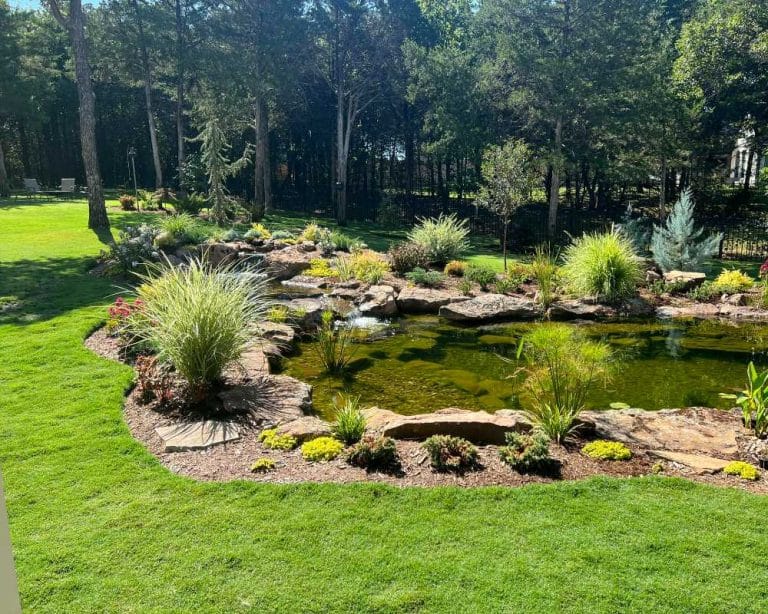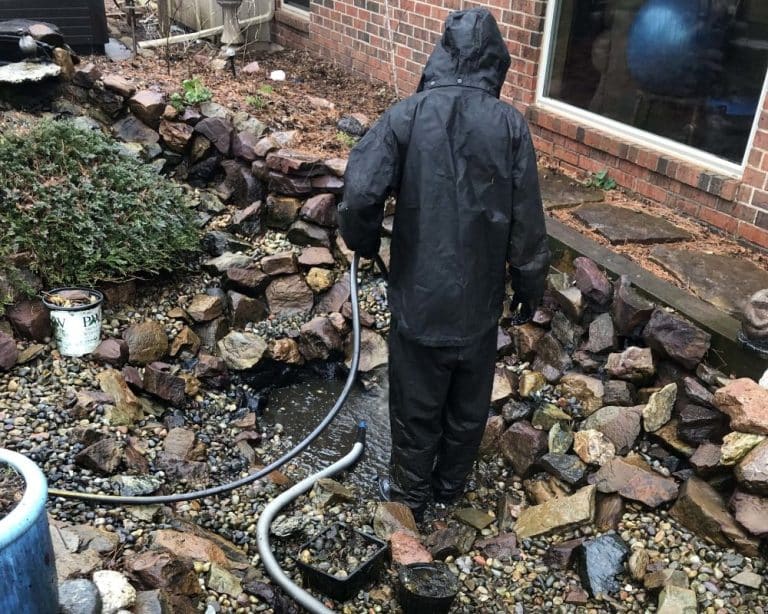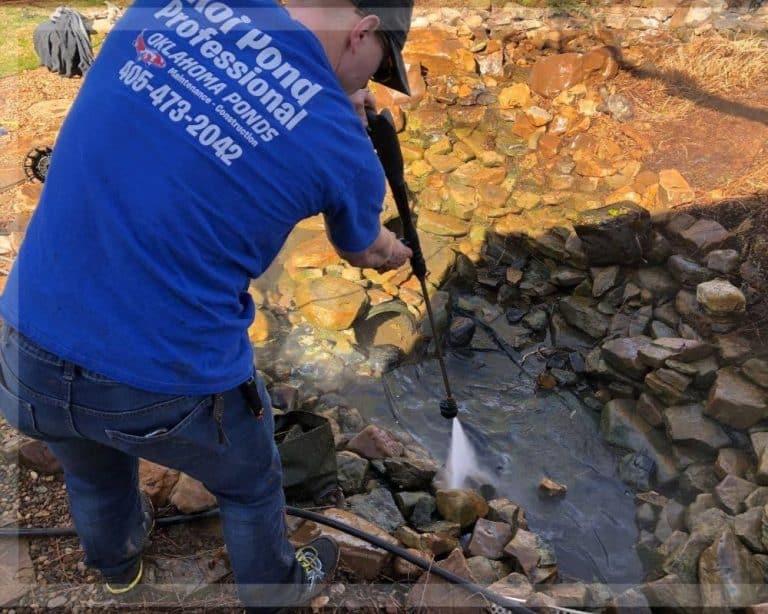What Are Tannins and How Can You Prevent Them
We’ve officially reached the time of year when the leaves have mostly fallen off of the trees. Inevitably, at least a few of those leaves have found their way into your pond or water feature. For most ponds, a few leaves getting past the net or skimmer and making their way to the bottom of the pond is no big deal. Your pond is a thriving ecosystem, after all, so surely it can handle a few leaves, right?
Your pond ecosystem can indeed handle some leaves. However, letting too many fall into your pond, or letting leaves from certain tree species (like pecan) collect in the water can leave it with an unsightly brown or yellowish tint in the autumn. The tint is from tannins, which are an organic, carbon-based substance. Tannin buildup can be frustrating if you don’t know what caused it or how to fix it.
In low doses, tannins are not dangerous to your fish or your plants. They’re essentially a stain in the water that can, at times, be as dark as a cup of tea! So, what do pond owners need to know about tannins, and how can they get rid of them once they buildup? Read on to learn all about tannins.
What You Need to Know About Tannins
Imagine that your pond is a cup of tea and that the leaves are the teabag. The longer you let the leaves “steep” in your pond, the more tannins you’ll have staining your water and potentially knocking your ecosystem out of balance.

The most common cause of tannin buildup is leaves collecting in the pond in the autumn. However, a pond can develop tannins year-round if it has an excessive buildup of decomposing organic material. All organic materials release tannins into the water as they breakdown, but some release more than others. Pecan leaves and nuts, for example, create more tannins than some other tree species.
If your pond begins to develop tannins and you leave it untreated and let it progress, it can lower the pH in your pond. Too many decomposing organics can also overwhelm your pond’s beneficial bacteria, which allows ammonia and nitrite levels to climb. All three of these conditions can be dangerous for your fish and plants.
If you leave the tannins in your water during fall and winter, the bacteria in your pond will continue to decompose the organic materials in the warmer months. Bacteria use a lot of oxygen to breakdown organics, but the spring and summer are when dissolved oxygen is in the highest demand for your fish. When your fish have to compete for limited oxygen, it harms their health.
The good news about tannins? They’re easy to prevent, and they’re treatable!
How to Prevent Tannin Buildup
The best way to prevent tannin buildup is to address the problem at its source: leaves! Before autumn progresses and the leaves really start to fall, you should tightly cover your pond with a protective net. If you don’t already have a skimmer, you should invest in one. Skimmers are amazing filtration devices that mechanically remove solids from the surface of the water.

After installing a skimmer, or if you already have one, it’s really helpful to make sure that it is clean. If you live in an area with dense foliage near your pond, you may need to cover it with a net AND check your skimmer a few times each week as the leaves fall to keep the tannins in check. If you have questions about skimmers or would like to have one installed in your pond, give us a call.
Another quick, easy strategy to prevent tannin buildup is to rake the leaves in your yard to keep them out of your pond.
What Should You Do Once You Have Tannin Buildup?
Cleaning out tannins takes some effort, but it is possible, and it is worth it for the health of your pond. When we come across a pond that has a tannin problem, our first step is to remove the source: decomposing organic materials.

Our pond experts begin by cleaning your pond’s skimmer and manually removing as much decomposing organic material as possible from the bottom of the pond. Next, we do a 25% water change twice a week to freshen the water. We also install a protective net to keep the pond from filling back up with leaves.
If the first steps aren’t quite enough, we add a water treatment called Clear by Aquascape. Pond owners usually see great results within 48 hours.
Another common and effective strategy for treating the water is to use activated carbon. As the water flows over or through the carbon filter, the carbon removes most natural pollutants, leaving clear, tannin-free water behind.
Struggling with Tannin Buildup?
If you’re struggling to get the tanning buildup in your pond under control, or you’d like to prevent tannin buildup in the first place, get in touch. Your pond is our art, and we’re passionate about helping you maintain the most beautiful water garden possible.




